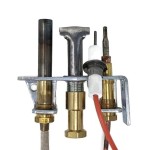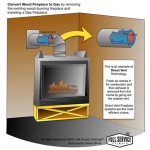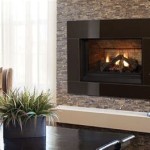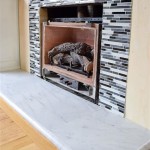Grizzly Fireplace Insert: A Comprehensive Overview
Fireplace inserts offer an efficient and aesthetically pleasing solution for upgrading existing masonry fireplaces. Among the various options available, Grizzly fireplace inserts stand out due to their reputation for durability, performance, and value. This article provides a comprehensive overview of Grizzly fireplace inserts, encompassing their features, benefits, considerations for selection, and maintenance practices.
A fireplace insert is essentially a self-contained heating appliance designed to be installed directly into an existing fireplace opening. Unlike traditional open fireplaces, which lose a significant portion of their heat up the chimney, inserts are designed to maximize heat output and efficiency. They accomplish this through a closed combustion chamber, often with features like baffles and air wash systems, which contribute to more complete burning and reduced emissions.
Grizzly fireplace inserts are manufactured with a focus on providing reliable and cost-effective heating. While the specific models and features may vary, the overarching goal is to offer homeowners a practical and efficient alternative to traditional fireplaces, capable of reducing heating costs and enhancing the ambiance of their living spaces.
Key Features and Benefits of Grizzly Fireplace Inserts
Grizzly fireplace inserts offer a range of features and benefits that contribute to their popularity among homeowners. Understanding these aspects is crucial for making an informed decision when considering a fireplace insert.
One of the primary benefits of a Grizzly insert is improved heating efficiency. Traditional fireplaces are notoriously inefficient, often drawing more heat out of a room than they provide. Inserts, on the other hand, are designed to radiate heat directly into the living space, and their closed combustion systems minimize heat loss up the chimney. Many Grizzly models boast high efficiency ratings, translating to lower fuel consumption and reduced heating bills.
Grizzly inserts can burn a variety of fuels, including wood, gas, and pellets, depending on the specific model. Wood-burning inserts provide a traditional aesthetic and are suitable for homes with access to affordable wood. Gas inserts offer convenience and ease of use, with options for remote control and thermostat regulation. Pellet inserts provide a balance of convenience and efficiency, using compressed wood pellets as fuel.
Beyond efficiency and fuel options, Grizzly fireplace inserts also offer enhanced safety features. The closed combustion chamber prevents sparks and embers from escaping into the room, reducing the risk of fire hazards. Many models also include features such as automatic shut-off mechanisms and overheat protection to further enhance safety.
Aesthetically, Grizzly inserts can significantly enhance the look of a fireplace. They are available in a variety of styles and finishes, ranging from traditional to contemporary, allowing homeowners to customize the appearance of their fireplace to match their décor. The fire viewing area is typically larger and more prominent than that of a traditional fireplace, providing a more captivating visual experience.
Finally, installing a Grizzly fireplace insert can increase the value of a home. A professionally installed insert adds a desirable feature that can appeal to potential buyers, showcasing energy efficiency and aesthetic appeal. It can also reduce reliance on central heating systems, potentially lowering energy costs for future homeowners.
Factors to Consider When Selecting a Grizzly Fireplace Insert
Choosing the right Grizzly fireplace insert involves careful consideration of several factors to ensure it meets the specific needs and requirements of the homeowner and the installation site. Understanding these factors is essential for maximizing the benefits of the insert and ensuring safe and efficient operation.
The size of the fireplace opening is a crucial consideration. Grizzly inserts are available in various sizes to accommodate different fireplace dimensions. It is essential to accurately measure the width, height, and depth of the existing fireplace opening to ensure a proper fit. An improperly sized insert can be difficult to install and may not function correctly.
Fuel type is another important factor to consider. As previously mentioned, Grizzly inserts are available in wood-burning, gas, and pellet models. The choice of fuel depends on factors such as fuel availability, cost, convenience, and personal preference. Wood-burning inserts require a reliable source of firewood and regular maintenance, while gas inserts require a gas line connection. Pellet inserts offer a convenient and efficient alternative, but require a supply of wood pellets.
Heating capacity is a critical factor in determining the appropriate insert size for a given space. Heating capacity is typically measured in British Thermal Units (BTUs). It is necessary to calculate the heat loss of the room or area to be heated, taking into account factors such as insulation levels, window size, and ceiling height. A larger space will require an insert with a higher BTU output, while a smaller space may only require a lower BTU output.
It is essential to consider local building codes and regulations. Many jurisdictions have specific requirements for fireplace insert installations, including venting requirements, clearances to combustible materials, and inspection procedures. It is important to check with local building officials to ensure that the chosen insert meets all applicable codes and regulations.
The venting system is a crucial component of a fireplace insert installation. The venting system is responsible for safely exhausting combustion gases from the insert. The type of venting required depends on the fuel type and the specific insert model. Wood-burning inserts typically require a stainless steel chimney liner, while gas inserts may require a different type of venting. It is important to ensure that the venting system is properly installed and maintained to prevent the buildup of dangerous gases.
Finally, budget is a significant consideration. Grizzly fireplace inserts are available in a range of price points, depending on factors such as size, features, and fuel type. It is important to establish a budget before beginning the selection process and to consider the total cost of ownership, including installation, fuel costs, and maintenance expenses.
Maintenance and Safety Considerations for Grizzly Fireplace Inserts
Proper maintenance and adherence to safety guidelines are essential for ensuring the safe and efficient operation of a Grizzly fireplace insert. Regular maintenance can prolong the life of the insert, improve its performance, and prevent potential hazards. Understanding these aspects is crucial for realizing the full benefits of a Grizzly fireplace insert.
Regular cleaning is essential for maintaining the efficiency of a Grizzly fireplace insert. For wood-burning inserts, it is important to remove ash buildup regularly. Ash can accumulate in the combustion chamber and on the baffles, reducing airflow and hindering combustion. For gas and pellet inserts, cleaning may involve removing dust and debris from the burner and venting system.
Annual inspections are recommended to identify potential problems before they become serious. A qualified technician should inspect the insert for signs of wear and tear, such as cracks, leaks, or corrosion. The technician should also inspect the venting system to ensure that it is properly sealed and free of obstructions.
Venting system maintenance is crucial for preventing the buildup of dangerous gases. For wood-burning inserts, it is essential to have the chimney swept regularly to remove creosote buildup. Creosote is a flammable substance that can accumulate in the chimney and pose a fire hazard. For gas and pellet inserts, the venting system should be inspected for blockages and corrosion.
It is important to follow the manufacturer's instructions for fuel selection and operation. Using the wrong type of fuel can damage the insert and create safety hazards. Overloading the combustion chamber can also be dangerous, as it can lead to overheating and the release of harmful gases.
Carbon monoxide detection is essential for any home with a fireplace insert. Carbon monoxide is a colorless, odorless gas that can be deadly. A carbon monoxide detector should be installed near the fireplace insert and tested regularly to ensure that it is functioning properly.
Proper storage of fuel is important for preventing fire hazards. Wood should be stored in a dry, well-ventilated area away from the house. Gas tanks should be stored in a secure location, and pellet bags should be kept dry to prevent them from deteriorating.
Educating all household members about the safe operation of the fireplace insert is crucial. Everyone should understand how to light the insert, how to adjust the air controls, and what to do in case of a fire or other emergency. Children should be supervised around the fireplace insert at all times.
Finally, documenting maintenance activities is helpful for tracking the performance and condition of the fireplace insert. Keeping a log of cleaning, inspections, and repairs can help identify potential problems early on and ensure that the insert is properly maintained.
By understanding the features, benefits, selection considerations, and maintenance practices associated with Grizzly fireplace inserts, homeowners can make informed decisions and enjoy the warmth, comfort, and efficiency that these appliances offer.
Need Info On Old Grizzly Insert Hearth Com Forums Home

Fireplace Grizzly

Fireplace Grizzly
Name This Grizzly Hearth Com Forums Home

Regency Pro Series Ci2700 Wood Insert Hearth Appliances

Hearth Appliances We Can Order At Grizzly Fireplace

Fireplace Grizzly
Derco Blazer Wood Stove Grizzly Hearth Com Forums Home

Napoleon S Series S25i Wood Burning Fireplace Insert Hearth Appliances

Regency Classic I2450 Wood Insert Hearth Appliances
Related Posts








